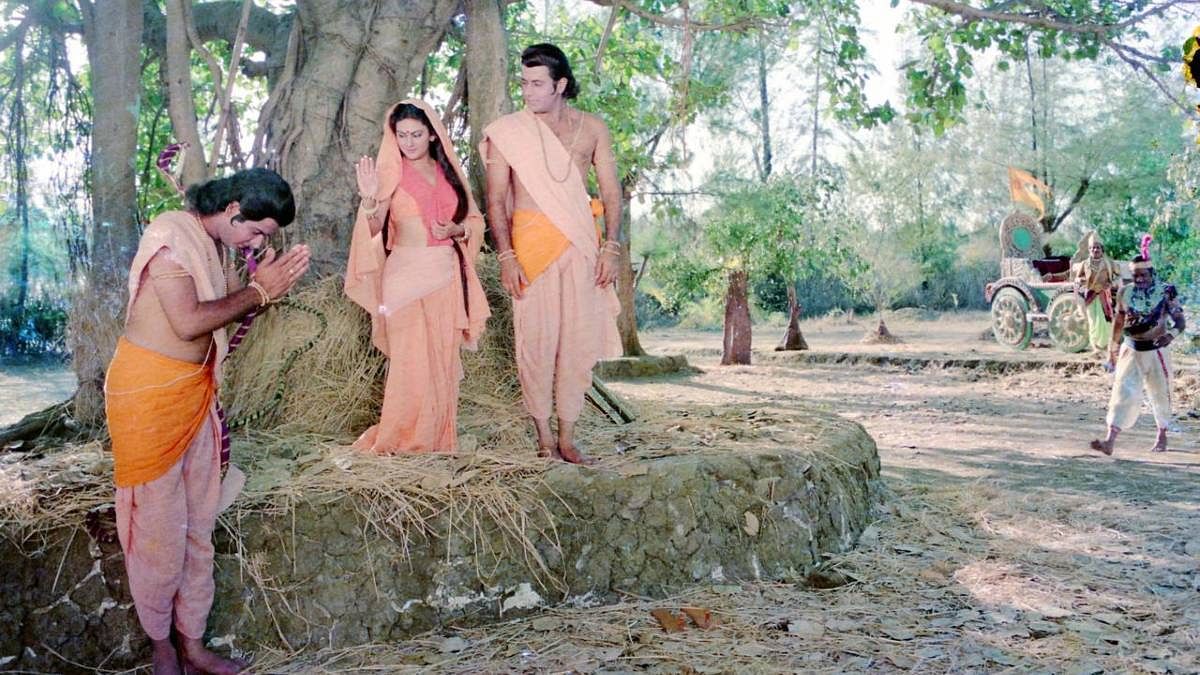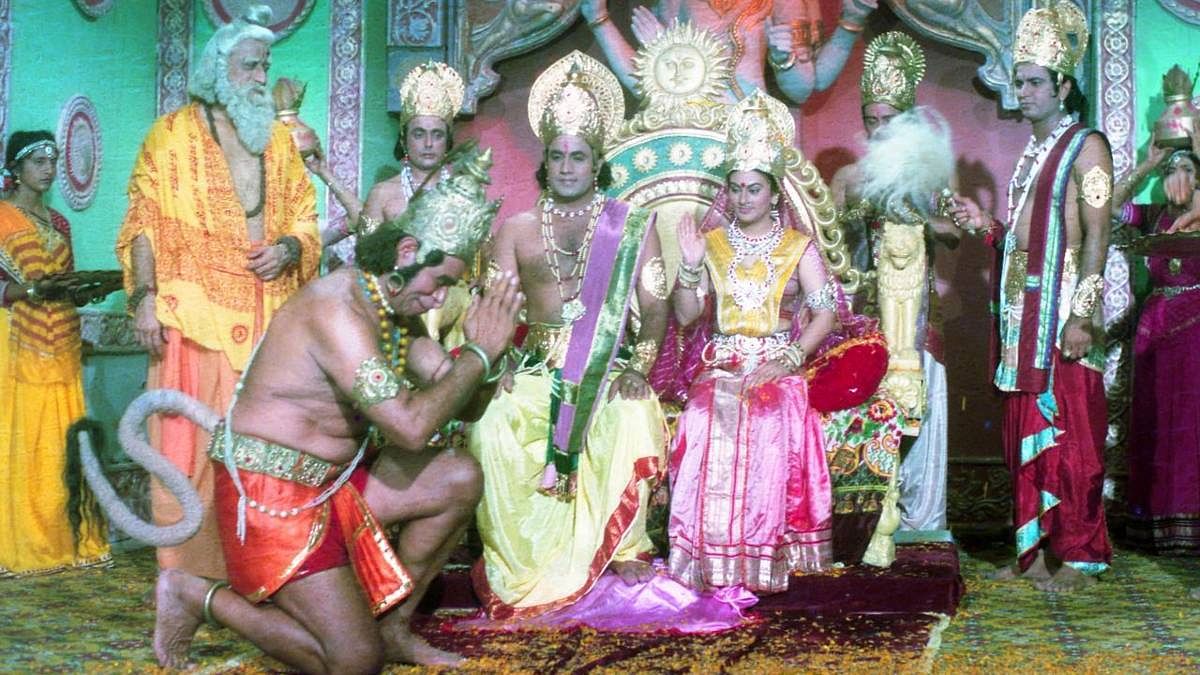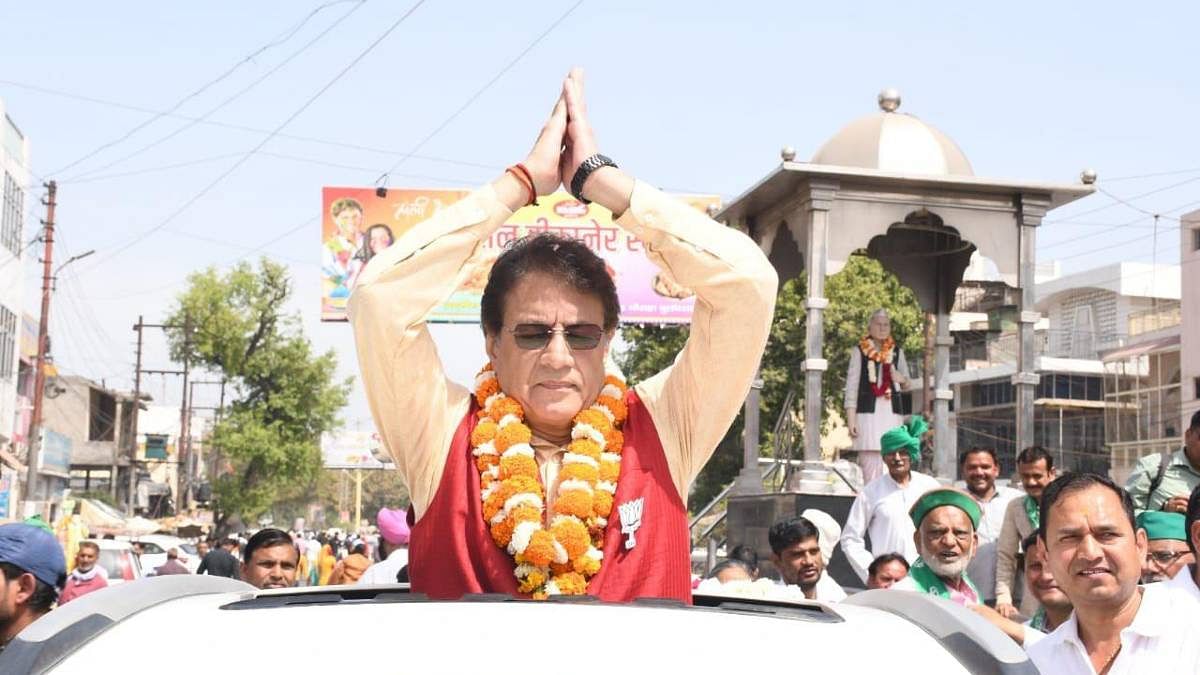“The vanvaas of Ram ended with his return to Ayodhya, and now Ram has returned to Meerut to claim his land. This election is for Ram and those who care for Ram,” Rajesh Rai, a beaming BJP worker, told ThePrint on the day of Govil’s nomination.
Significantly, the BJP has fielded “television’s Ram” into the political battlefield of Uttar Pradesh in the wake of the inauguration of the Ram Mandir in Ayodhya and as a clever messaging for the Hindu electorate across UP and other parts of the Hindi heartland, where Ramayana and Govil recall values are still high.
The nomination is apparently also meant to safeguard the tricky seat of Meerut (western UP), which is estimated to have a sizeable Muslim population of around 5.6 lakh.
In the previous general election, the BSP-SP-RLD alliance had cost the BJP seven Lok Sabha seats in the state’s west. While the party won Meerut, its three-time MP Rajendra Agrawal had managed victory by a margin of just around 4,000 votes against BSP’s Haji Yaqoob Qureshi. UP has a total of 80 Lok Sabha seats.
This time, the BJP can rejoice in the fact that there is no alliance between the SP and the BSP and that it has managed to ally with the RLD, which has a strong base among the Jat community in western UP.
Against Govil, the SP has fielded Sunita Verma, wife of former legislator Yogesh Verma, after twice changing its candidate over reports of them not being strong contenders. The BSP has not put up a Muslim or Dalit candidate, but fielded Devvrit Tyagi, who is expected to cut the BJP’s vote.
Vineet Sharda, a prominent Meerut BJP leader, told ThePrint: “Meerut has been with the BJP since 1991. The party has won the seat six times since then, and thrice by Rajendra Agrawal. The party was defeated only in 1999 and 2004. Be it (previous SP candidate Atul) Pradhan or (BSP’s) Tyagi, they are no match for Govil who is a local and brings Ram into the narrative of Hindustan through his spectacular acting.”
Also Read: Origins & evolution of BJP’s dalliance with Shia Muslims, the ‘minority within minority’
Return of ‘Ram’ to Meerut
Dressed in a saffron kurta pyjama and white Nehru jacket, Govil started his speech Tuesday by asserting that the “entire country is watching the Meerut election and they want to know how much would be the victory margin”.
“We have to take care of this victory margin and break the record,” he said.
As the 72-year-old stepped out of his vehicle, women showered him with petals, blew on conch shells and jostled to take selfies with the maryada purushottam (as Ram is referred to in Hinduism).
Chants of ‘Jai Shree Ram’ were louder than those of ‘Abki baar, 400 par’ (BJP’s poll slogan), at least in Meerut. Obliging everyone with folded hands and delivering apt dialogues of Ram, Govil floored the public with memories of the Ramayana.
“I am much humbled on seeing the people’s love and affection. I got nostalgic after coming here. I got the chance to come back to my birthplace, and Ramji has made that happen,” he told ThePrint.
Amid back-to-back meetings and rallies, Govil visited the temples and garlanded statues of the legends of the 1857 revolt as well as local heroes, keeping in mind local sensibilities. He even stopped to garland a statue of western UP’s Jat giant Chaudhary Charan Singh, whose grandson Jayant Chaudhary’s RLD has joined the NDA.
The importance of Meerut can be gauged from the fact that Prime Minister Narendra Modi started his UP poll campaign this week from here with RLD’s Chaudhary.
Govil, too, knows the importance of being fielded from the constituency and the significance of his image of Ram in the battlefield. He told the crowds in Meerut: “Ram Lalla returned to Ayodhya this January after so many years of ‘vanvaas’. Whether this is a coincidence or a well-thought decision, the person who played Ram has also returned to his land. I have come to do something for my people. The public will ask, ‘Ram has been fielded in his birthplace of Meerut, what was his margin? How many votes did he get?’ Always keep this in mind.”

Waiting for her turn to garland Govil, a woman in the crowd, Rekha Arya, dressed in a handloom sari and holding petals in her hand, said: “I could not believe that I am seeing him directly. I have only seen him on TV. For me, he is lord Ram. I am so excited about garlanding him and taking his blessing.”
Standing next to her in the crowded Meerut market, shopkeeper Rajesh Tyagi said: “Modiji gave the Delhi expressway and Namo rail, (UP chief minister) Yogiji ensured no one touched our sisters. Rajendra Agrawal became complacent in his term, but by fielding Govil, the BJP has galvanised the cadre in the city.”
The making of Govil as Ram
The teleserial Ramayana, first broadcast on Doordarshan in 1987, had broken all popularity charts in India at a time when social media was not even born.
Prem Sagar, son of legendary filmmaker Ramanand Sagar, spoke to ThePrint about the making of the show and the difficulties faced.
“The making of Ramayana was not an easy task. It was divine power which made it possible. My father wanted to make the Ramayana and distribute it through video cassettes and asked me to travel globally to meet distributors and pitch the idea. I travelled from London to Paris, but no distributor was ready to back such a big religious and cultural mythological project,” he said.
“The industry people thought that the Sagars had lost their mind. People said ‘who will watch a serial about mukut and mooch (crown and moustache)?’ There were zero buyers for Ramanand’s vision of Ramayana and Ram, but papaji was firm. He announced that he would launch the Ramayana through video cassettes.”
According to Prem Sagar, before launching the Ramayana, he suggested to his father to test the market through a serial on TV. “We made ‘Vikram Aur Betaal’ in 1985 before starting the Ramayana, and it became a superhit on the small screen, which was a new phenomenon in India.”
In ‘Vikram Aur Betaal’, Govil had played king Vikram, Sunil Lahri, who went on to play Laxman in the Ramayana, was a prince, and Dara Singh, who was cast in the Ramayana as Hanuman, played Virvar.
“Selecting Govil to play Ram’s character was obvious. He had worked in our earlier production. Our test marketing though ‘Vikram Aur Betaal’ was successful. He has a special Aryan look and built required for Ram, and a soft face and affable smile required for the role, too. His dialogue delivery is extraordinary. The director doesn’t need to give any directions to Arun. He can act a 10-page script without any take,” said Prem Sagar.
Govil, however, told ThePrint that “he had been initially rejected for the role of Ram”.
“Ramanand Sagar urged me to play the role of Bharat (Ram’s half-brother), but I was determined to play Ram. After a few days of auditions, Sagar one day called me and asked me to play Ram,” he said.
While enshrined in the public imagination as Ram, Govil has played many roles in films and theatre too, most recently the role of PM Modi in the film ‘Article 370′.
Govil started his acting career in school theatre and was part of the theatre group in Meerut’s Government Inter College. In Mumbai in the mid-70s, Rajshri Productions spotted and cast him in the film ‘Paheli’ in 1977. In the subsequent years, the production house produced three films starring Govil in the lead role.
He told ThePrint: “The response to the Ramayana was huge. I received a lot of respect and love. After playing Ram, I was completely removed from commercial cinema. Filmmakers and producers told me that they saw Ram’s avatar in me, and couldn’t see me as any other character. For an actor, this is not good but when I look at my journey in retrospect, everything was predestined.”

Govil had also revealed in an interview on ‘The Kapil Sharma Show’ that after the super success of the Ramayana, he never smoked cigarettes as “fans would get upset with him” because they saw their god, Ram, in him.
The Ramayana made not just Govil but also Dipika Chikhlia, who played Sita, and Lahri, who played Laxman (Ram’s brother), a household name in India.
Lahri told ThePrint that “Arun Govil was determined to play the role of Ram from the initial days, although after the Ramayana, his acting career in commercial cinema suffered.”
“Directors were not ready to risk portraying him in a romantic role.”
Govil recalled the time when around 10 lakh people had gathered on a 10-km wide ghat in Varanasi just to catch a glimpse of him, Chihklia and Lahri in the get up of Ram, Sita and Laxman.
Govil’s political plunge
While Govil’s other Ramayana colleagues, such as Arvind Trivedi who played Ravana, Dara Singh, and Chikhlia, became parliamentarians after the success of the teleserial, he himself maintained a distance from politics.
The closest Govil came to the political arena was when he campaigned for Congress candidate Sunil Shastri in the historic Allahabad bypolls against Jan Morcha leader V.P. Singh in 1988. Singh was riding on an anti-corruption wave, but then PM Rajiv Gandhi brought Govil dressed as Ram to campaign in Allahabad. However, he could not stop Shastri from being defeated, and Govil henceforth stayed away from politics.
Shastri, son of former PM Lal Bahadur Shastri, told ThePrint that “V.P. Singh was riding on the wave of the Bofors scandal and was a crusader against corruption. The entire opposition was with Singh, and we called Govil to campaign as his popularity after the Ramayana had skyrocketed. But it did not help as the mood was in Singh’s favour.”
Govil said he stayed away from politics for more than 35 years and joined the BJP only in 2021, after the Supreme Court announced its verdict in the Babri Masjid-Ram Janmabhoomi dispute in favour of the Hindu side, and construction started for the temple in Ayodhya.
Govil further kept a low profile till January, when the Ram Mandir was inaugurated. He was subsequently spotted in Ayodhya along with Chikhlia and Lahri, and seen mingling with BJP’s UP chief Bhupendra Chaudhary and deputy CM Keshav Prasad Maurya and walking the streets in yellow attire — in an indication of his electoral debut from the state.
“Even Rajiv Gandhi had offered me a ticket, and the BJP asked me to fight the elections several times in the last decade, but I was hesitant to enter politics. After the Supreme Court’s Ayodhya verdict and the start of the construction of the Ram temple, my view changed. I thought that through politics, I can do social service,” Govil told ThePrint.
“I don’t fit into any established definition of politics, but I have not come here to do politics but for social service,” he asserted.
(Edited by Nida Fatima Siddiqui)
Also Read: Modi’s poll push, ‘Ram’ on the dais — scenes from PM’s rally in Meerut

